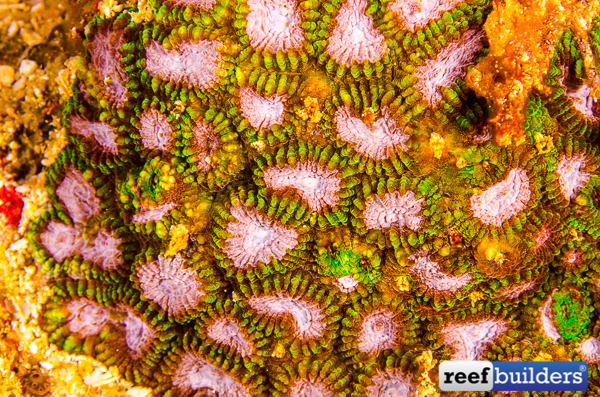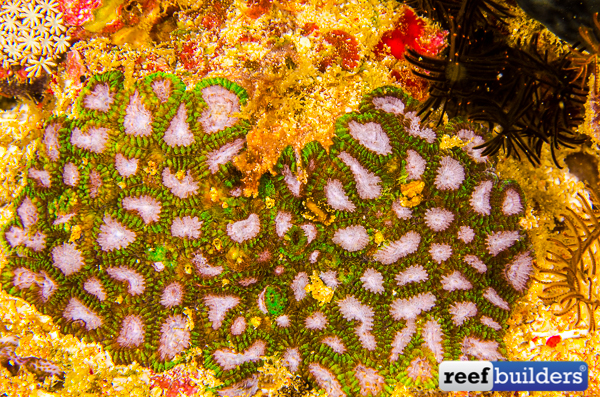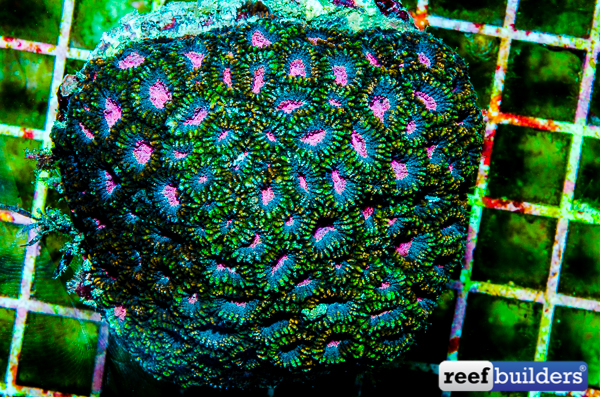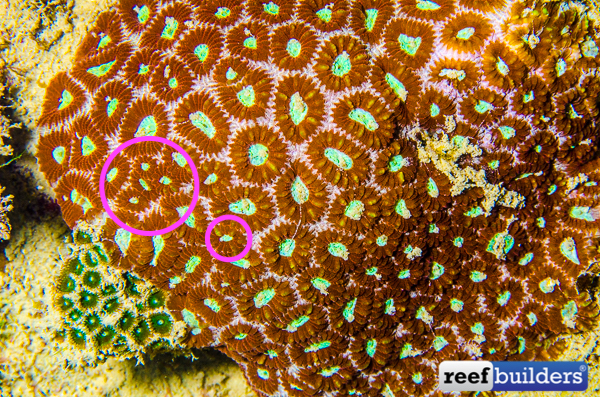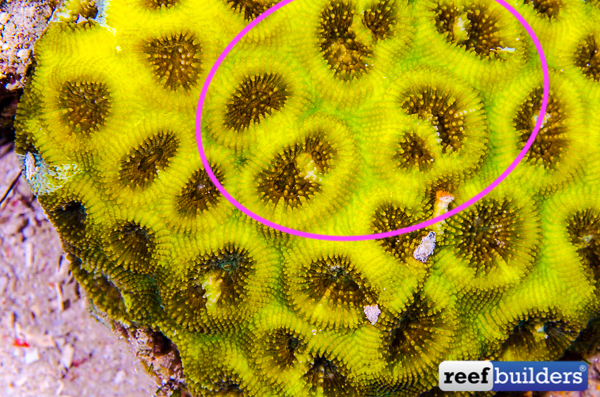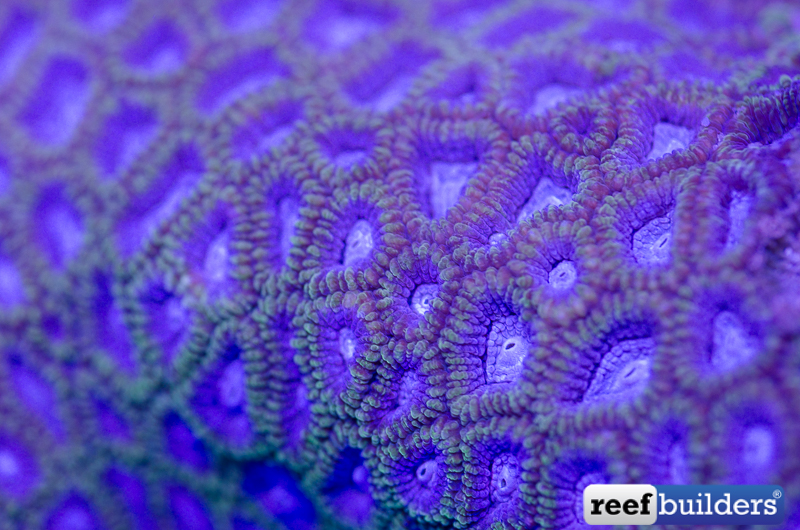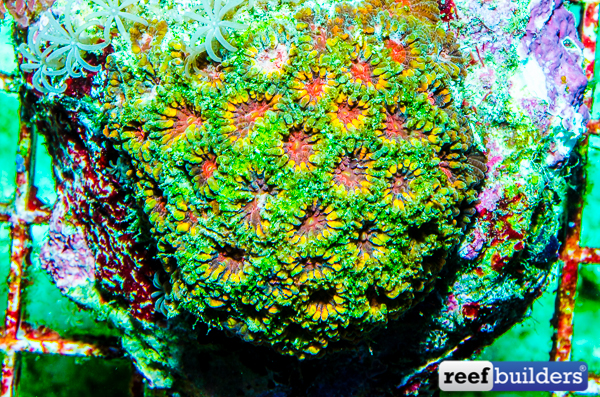Dipsastraea matthai is a pretty common coral in the trade. It’s often misidentified as Micromussa. And it was recently moved from Favia that is now exclusively Atlantic genus, to the new Dipsastraea which has been created for its Indopacific members of the former genus.
Intra-tentacular budding in Dipsastraea:
Dipsastrea is very similar to Phymastrea (Ex-Montastrea). Polyps don’t share walls. Corallite size is about the same size. The pronounced septa give the same ringed calice look. Paliform lobe surrounding the mouth are usually obvious. And finally, the center of the corallite is wider in Dipsastraea.
But the main difference between them is that new polyps appear inside older polyps (intra-tentacular) in Dipsastraea. While it appears in between older polyps (extra-tentacular) in Tipastrea.
It is distinguished from other Dipsastraea, by the very crowded corallites, and the obvious paliform lobes surrounding the mouth.
Dipastraea matthaii is usually misidentified as a Micromussa:
The main reason for this confusion is the pretty much same corallite size. But the main difference and most obvious difference can be observed when all the tissues are retracted. Micromussa polyps share the same walls, while Dipsastraea don’t and each polyp has its own wall.
They don’t belong to the same family.
Habitat:
Dipsastraea matthaii is a common coral of shallow, turbid reefs. Sometimes exposed to a bit of current. It’s a LPS, so it doesn’t need a tremendous amount of light. But it will enjoy some mild direct light. It can withstand a good amount of flow. And certainly will enjoy a copious amount of food, that will definitely increase its growth.
Coloration:
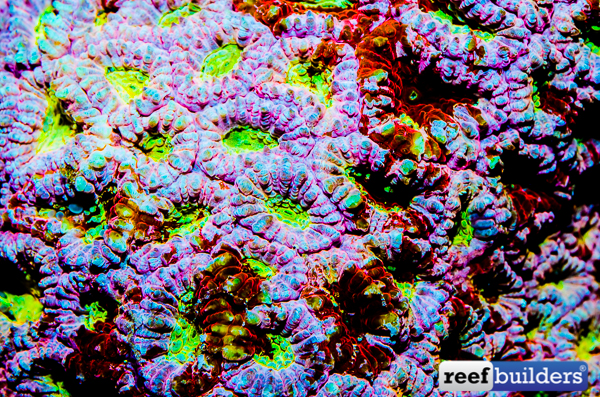
This species develops a very wide spectrum of colorations. Often with different coloration, between, the mouth, septa, and coenosteum. Or marble style coloration that is typical of Dipsastraea (Ex Favia).
This species is very colorful, easy to maintain, rewarding coral. It’s gaining popularity as it can be fragged and grown pretty easily. It’s a good aquarium coral and a good option for beginning reef aquarists.


